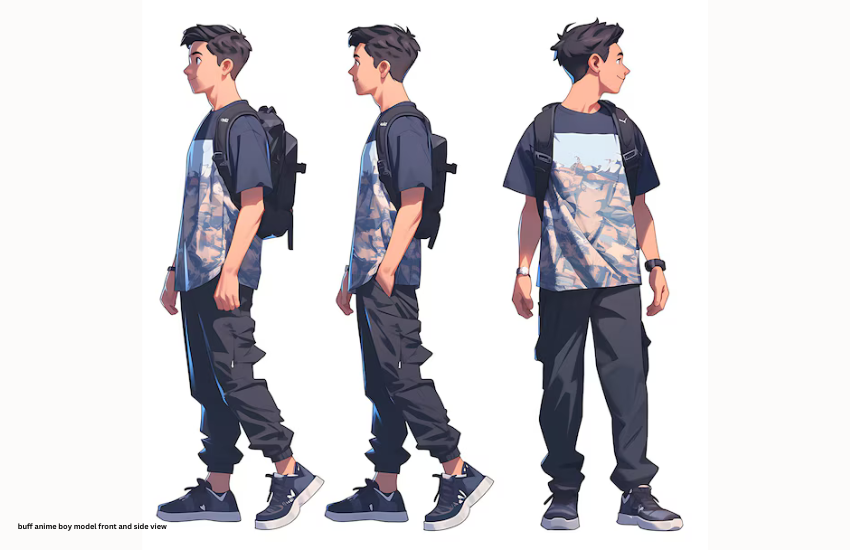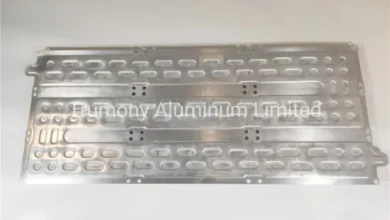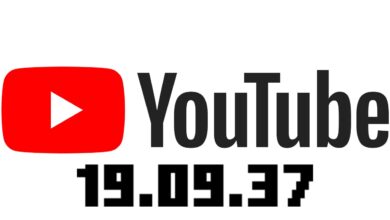Buff anime boy model front and side view

1. Understanding the Buff Anime Boy Model
1.1 Defining “Buff” in Anime Terms
In anime, “buff” refers to a character with a muscular and well-defined physique. Unlike the typical lean or slender anime characters, buff anime boys are characterized by their robust build, broad shoulders, and visible muscle definition. This portrayal often emphasizes strength, power, and physical prowess.
1.2 Popularity of Buff Anime Boys
Buff anime boys have gained significant popularity due to their association with strong, heroic roles in anime. Characters like Goku from “Dragon Ball Z” or All Might from “My Hero Academia” are prime examples, showcasing how a muscular build can contribute to a character’s identity and appeal.
1.3 Characteristics of Buff Anime Boys
Key characteristics include a broad chest, well-defined abs, powerful limbs, and a generally imposing stance. These features not only make the character visually striking but also enhance their role as strong and influential figures in their respective stories.
2. The Importance of Accurate Front and Side Views
2.1 Enhancing Character Design
Accurate front and side views are crucial for character design, as they provide a comprehensive understanding of the character’s physique. The front view showcases the overall proportions and symmetry, while the side view highlights depth and profile details, ensuring that the character is consistently portrayed in various poses.
2.2 Creating Consistency in Artwork
For illustrators and animators, consistency is key. Detailed front and side views help maintain uniformity in character design across different scenes and angles, preventing discrepancies that might distract or confuse the audience.
2.3 Importance for Animators and Illustrators
Animators and illustrators rely on detailed views to create accurate animations and illustrations. These views serve as reference points, ensuring that every movement and posture aligns with the character’s designed physique, resulting in smoother and more believable animations.
3. Detailed Breakdown of Front View
3.1 Proportions and Anatomy
In the front view, focus on the character’s overall proportions. A buff anime boy should have a wider chest compared to the waist, well-defined shoulders, and evenly distributed muscle mass. The head should be proportionate to the body, typically around 1/8th of the total height.
3.2 Key Features to Highlight
Highlight the muscular features such as the pectorals, abs, and biceps. Ensure that these features are well-defined and symmetrical. Pay attention to the placement of muscles and how they flow into each other, enhancing the character’s physique and strength.
3.3 Common Mistakes to Avoid
Avoid making the muscles look exaggerated or unrealistic. It’s important to strike a balance between muscular definition and natural anatomy. Ensure that the proportions are accurate and that the character’s body does not appear distorted or out of place.
4. Detailed Breakdown of Side View
4.1 Profile Anatomy Considerations
The side view provides a profile perspective of the character. Pay attention to the curvature of the spine, the bulge of the muscles, and the overall silhouette. Ensure that the character’s build is consistent with the front view, maintaining a cohesive appearance.
4.2 Capturing Muscular Definition
In the side view, focus on the definition of the muscles, especially around the chest and abdomen. The side profile should emphasize the character’s muscularity while also depicting the depth and dimensionality of the body.
4.3 Ensuring Accuracy in Perspective
Perspective can sometimes distort the appearance of muscles and proportions. Ensure that the side view accurately reflects the character’s muscular build and does not exaggerate or downplay their physique. Use guidelines and reference images to maintain accurate proportions.
5. Tips for Drawing a Buff Anime Boy
5.1 Tools and Techniques
Utilize a range of drawing tools, from pencils and pens to digital tablets and software. Experiment with different techniques to achieve the desired level of detail and muscle definition. Layering and shading can help enhance the three-dimensionality of the character.
5.2 Finding Reference Material
References are invaluable for accurate muscle depiction. Use images of real-life athletes, anatomy books, and other anime characters as references to understand muscle structure and proportions.
5.3 Practice Exercises
Regular practice is key to improving your skills. Try sketching different poses and angles of buff anime boys to familiarize yourself with their anatomy and proportions. Practice drawing both front and side views to build a comprehensive understanding of the character’s physique.

6. Digital Tools for Designing Buff Anime Boys
6.1 Overview of Popular Software
Digital tools like Adobe Photoshop, Clip Studio Paint, and Procreate offer a range of features for designing anime characters. These tools provide options for detailed line work, shading, and coloring, making the design process more efficient and versatile.
6.2 Features to Look for in Drawing Programs
When choosing drawing software, look for features like layer management, pressure sensitivity, and customizable brushes. These features can enhance your ability to create detailed and dynamic designs.
6.3 How Digital Tools Enhance Your Design
Digital tools allow for easier adjustments, experimentation, and refinement. They enable you to work with layers, apply effects, and make corrections without starting over, streamlining the design process and enhancing the final output.
7. Examples and Inspiration
7.1 Iconic Buff Anime Boys in Media
Characters like Baki Hanma from “Baki the Grappler” and Kenpachi Zaraki from “Bleach” offer excellent examples of buff anime boys. Analyzing these characters can provide insights into effective muscular design and character portrayal.
7.2 Fan Art and Community Contributions
The anime community is rich with fan art showcasing buff anime boys. Explore platforms like DeviantArt and ArtStation to find inspiration and see how other artists approach the design of muscular characters.
7.3 Learning from Professional Illustrators
Studying the work of professional illustrators can provide valuable lessons in muscle depiction and character design. Look for tutorials and interviews with experienced artists to gain insights into their techniques and approaches.
8. Common Challenges and Solutions
8.1 Overcoming Proportional Issues
Proportional inaccuracies can be challenging. Use grids and guidelines to ensure that muscles and features are accurately represented. Regularly compare your work with reference images to maintain proportional accuracy.
8.2 Addressing Artistic Limitations
Artistic limitations can be addressed through practice and continued learning. Experiment with different techniques and seek feedback from peers to improve your skills and overcome challenges.
8.3 Balancing Aesthetic and Realism
Striking a balance between aesthetic appeal and realism is crucial. Aim to create a design that is visually striking yet believable. Avoid overly exaggerated features that might detract from the character’s overall design.
9. Conclusion
Designing a buff anime boy model involves careful consideration of anatomy, proportions, and artistic techniques. By focusing on accurate front and side views, utilizing digital tools, and seeking inspiration, you can create compelling and dynamic characters. Whether you’re an aspiring artist or a seasoned illustrator, understanding these elements will help you bring your buff anime boy creations to life with confidence.
FAQs
1. What are the basic proportions for a buff anime boy?
A buff anime boy typically has a broad chest, defined abs, and powerful limbs. The head should be about 1/8th of the total height, with a focus on balanced muscle definition.
2. How can I improve my side view drawing skills?
Practice drawing various poses and angles, use reference material, and study anatomical structure to improve your side view drawing skills. Experiment with shading and perspective to enhance the depth of your designs.
3. What software is best for designing anime characters?
Popular software for designing anime characters includes Adobe Photoshop, Clip Studio Paint, and Procreate. These programs offer a range of features for detailed design and illustration.
4. How do I find good references for buff anime boys?
Look for reference material in anatomy books, images of athletes, and existing anime characters. Online platforms and art communities can also provide valuable references and inspiration.
5. What are some common mistakes to avoid in anime character design?
Avoid exaggerating muscle definition to the point of distortion and ensure proportional accuracy. Pay attention to anatomy and maintain consistency between different views and poses.




